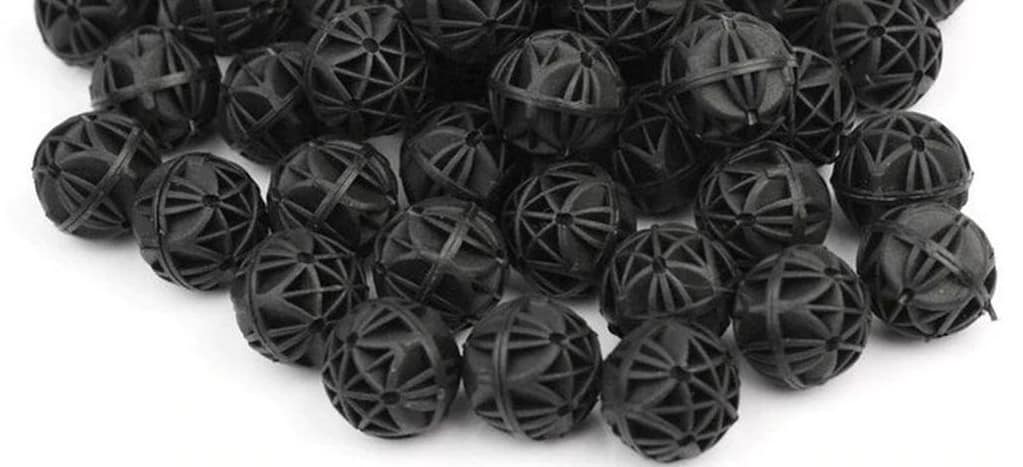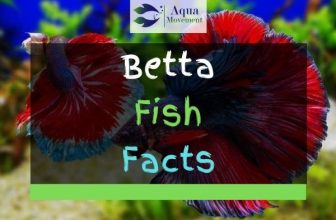What Are Bio Balls? – Top 5 Questions Answered
It goes without saying that any responsible pet owner will try and create the best living conditions for their beloved pets.
Fish owners are no different.
You might consider buying expensive filtration systems, the most nutritious fish food, or engaging scenery pieces for your fish to play in.
But you should not overlook the importance of bio-balls. They can be essential to maintaining a healthy living environment for your fish.
Table of Contents
What Are Bio Balls?
You may have already heard of these weird looking black balls that sit inside people’s aquariums. You may even have wondered, what are bio balls and what are they for?
Well, this article should help clear up any confusion surrounding bio balls.
Bio balls help create a better, healthier living environment for your fish. How do they do that?
Well, to answer that question requires a little bit of science.
See, the bio balls provide a home for certain types of bacteria. Bacteria are simply tiny ‘micro-organisms’ that are found in most environments. But aren’t bacteria bad for living things, you might ask?
Well, there are some species of bacteria that are harmful to plant or animal life, but there are other types that are absolutely necessary for fish life.
The bacteria that inhabit bio balls are a necessary part of the ecosystem. They can help by converting ammonia to nitrate or reducing nitrate to nitrite. Fish need these chemicals to survive, so these bacteria are very important!
How Do Bio Balls Work?
Bio balls are actually very simple device. They are simply small plastic balls (1-5 cm) that usually sit underwater in your fish tank. They have a porous structure, which means they have lots of holes and voids inside them. This is actually the principle that makes them function.
See, bacteria love to cling to any surface they find. So bio balls work by fitting in a lot of total surface area into a very small volume. Creating the perfect conditions for bacteria to thrive.
Bacteria simply float to the bio balls then attach to all the internal walls that they find, and start to go about their important work. Interesting, this same principle of packing huge surface areas into small spaces is the same principles that allows high power batteries and catalytic converters in cars to work!
The bio balls are important parts of the filtration system of any large fish tank. When water passes over them the bacteria extract the nitrite or ammonia, helping to keep their concentrations at a safe level in the tank. You should not overlook these tiny black balls!
How To Use Bio Balls?

Bio balls are very easy to use, and should be used by experienced and new fish keepers alike. You should always follow the instructions found on the individual type of bio ball that you buy, but there are some general rules.
First of all, bio balls generally work best as ‘wet-dry’ filters. This means they are most efficient when they are placed in the path of moving water. A constant stream of water allows the bacteria in the bio balls to keep on extracting ammonia at a constant rate. It also ensures that the bacteria get a steady supply of oxygen, which they need to keep alive.
Installing these important bio balls is a relatively simple process. You should place several bio balls in a special mesh bag, and place them in the stream of moving water in your fish tank’s filter.
If possible, you should place them downstream of any physical filter, since this will prevent them getting clogged up with algae or debris. This will also make them work most effectively.
Bio balls can either be used totally submerged, or as stated earlier, in wet-dry conditions. This means they can also be hung just above the water level, where the running stream enters the tank. Either way should work fine.
How To Clean Bio Balls?
There is a short answer to this, you don’t! In most conditions (if you have installed them properly), you should not need to clean your bio balls. In fact, this can be disastrous, because by cleaning your bio balls, either by scrubbing or using solvents, you might accidentally remove the bacterial colonies that makes them so special!
If you remove the bacteria then your bio balls will no longer function as living filters, and it may take some time to regrow your bacteria. This is best avoided.
Of course, if the bio balls become visibly clogged up e.g. with algae, then you should clean it if the flow of water is impeded.
However, you should be very careful when doing this.
Simply remove the algae by hand, without touching the surface of the bio balls. You may also swish the bio balls around in the tank water. It is best to minimize contact with the bio balls because some of the bacterial colonies can be quite fragile.
Cleaning of bio balls is best done when you are changing the water in your tank.
How Many Bio Balls To Use Per Gallon?
Of course, this depends on your specific tank set up, but a good general rule is to use about 2.2 gallons of bio balls per 100 gallons of water in your tank. Bio balls come in all sorts of shapes and sizes, so be sure to check the packaging for any specific instructions.
If you are worried, it is better to be safe than to be sorry. This means there is really no harm in using more bio balls than you strictly require, but if you use too few you could harm the fish.
[amazon box=”B00U9TKJDK”]
Conclusion
Hopefully, you can now answer the question what are bio balls? They are an important part of any good fish tank filtration system.
They provide a welcome home for the bacteria that reduce harmful ammonia in your tank. This keeps the water conditions healthy for your fish.
It is important to install the bio balls correctly, clean them carefully, and use an adequate amount. By doing this you will help keep your fish happy and healthy for longer!
Check Price and Reviews on Amazon




